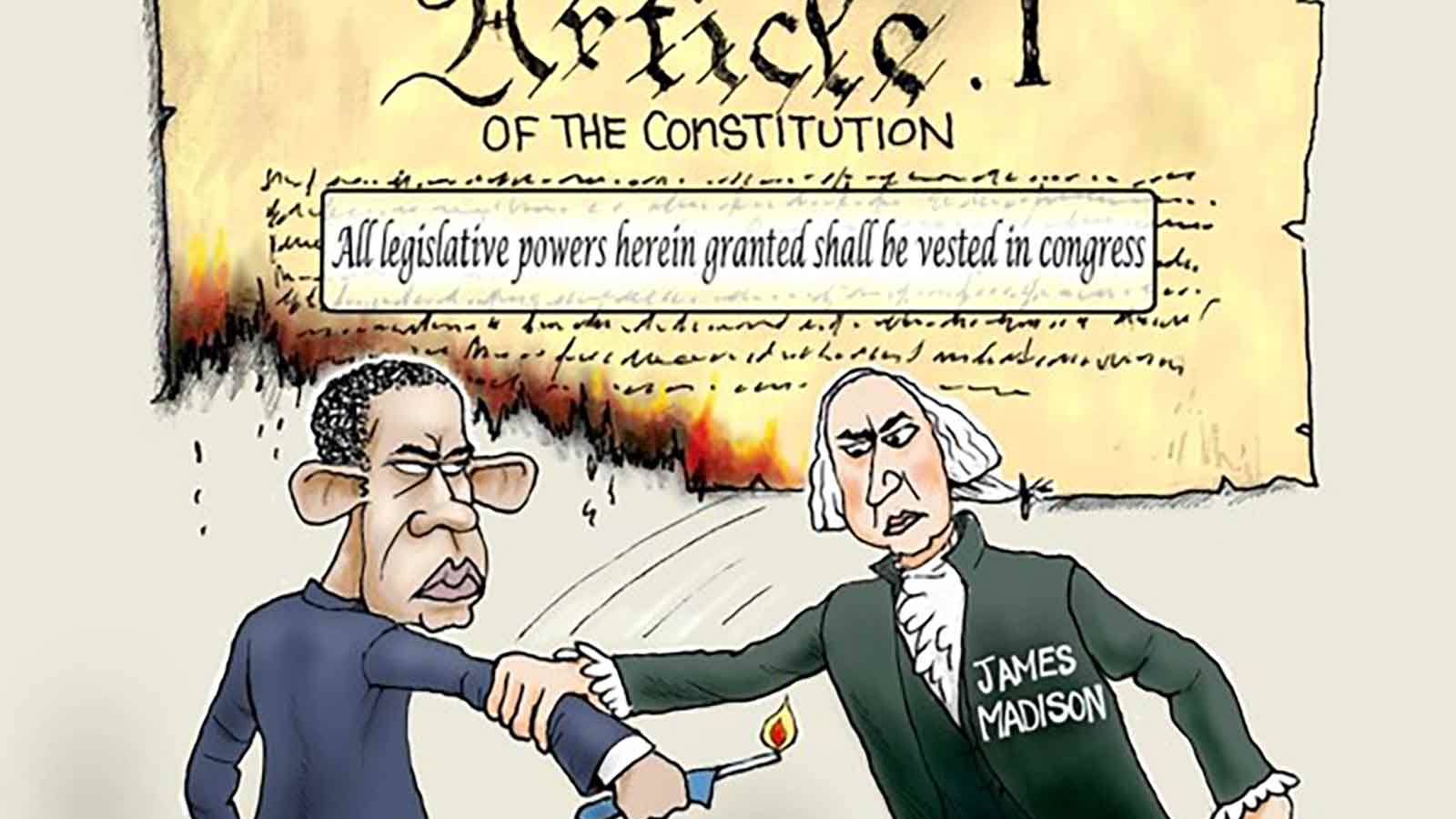
[1]
Constitution design controls the people in the national government
…the Declaration of Independence tells us, it is “to secure these rights” that “Governments are instituted among Men.”
The… Constitution, then, provides the law that governs those who govern us…
Those servants or agents who swear the oath to “this Constitution”—the written one—can no more change the “law that governs them” than we can change the speed limits that are imposed on us.[2, pp. 23-24.]
Constitution design uses structure to limit the national government
Federalism at the founding can… best be described as “Enumerated Powers Federalism.” …expressed in the first words of Article I, which created Congress: “All legislative powers herein granted shall be vested in a Congress of the United States.” …reinforced by the words of the Tenth Amendment: “The powers not delegated to the United States by the Constitution nor prohibited by it to the states, are reserved to the states respectively, or to the people.”[2, p. 190.]
…the more important the issue, the more likely it will engender a political war of all against all to avoid having another’s social policy imposed on you. So, the more important the issue, the less it is fit to be decided at the national level.[2, pp. 183-184.]
In Constitution design, structure is primary protection for individual rights
The U.S. Constitution is primarily a structure that was intended to protect the individual sovereignty of the people.
Only secondarily, and incompletely, does it expressly protect any particular rights retained by the people. In this sense, the few rights that are enumerated in the text of the Constitution are like the lifeboats on a ship. The fact that today our legal system pays so much attention to the few rights that are contained in the Constitution—such as the freedoms of speech, press, assembly, and the free exercise of religion—is a bad sign. It is a sign that the structural protections of the Constitution have been breached, and we are now all in the lifeboats.[2, pp. 167-168.]
“We have too long abrogated our duty to enforce the separation of powers required by our Constitution. We have overseen and sanctioned the growth of an administrative system that concentrates the power to make laws and the power to enforce them in the hands of a vast and unaccountable administrative apparatus that finds no comfortable home in our constitutional structure. The end result may be trains that run on time (although I doubt it), but the cost is to our Constitution and the individual liberty it protects.”
Instead, Justice Thomas urged us to “return to the original meaning of the Constitution: The Government may create generally applicable rules of private conduct only through the proper exercise of legislative power.”[2, pp. 213-214.]
- Romano, Robert. “Momentum Builds for Article 1 Supplemental.” conservativereview.com, 7 Feb. 2016, www.conservativereview.com/commentary/2016/02/momentum-builds-for-article-1-supplemental. Accessed 10 Dec. 2016.
- Barnett, Randy E. Our Republican Constitution: Securing the Liberty and Sovereignty of We the People. HarperCollins, 2016.